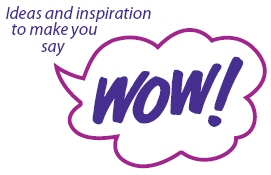The fine and ancient art of H’mmming! I last ran this article a year or so ago but a chat recently told me that it should get another early run.
If you’re in business you can get a conversation started with almost anybody you meet. In addition, when you get the conversation going it will quite often turn that person into a prospect. So how do you do that? Well, it’s really quite simple! You have to be able to say “H’mmm”.
How often have you been somewhere doing the old networking thing and you meet someone? You exchange the normal pleasantries, swapping names and occupations. That person you meet seems underwhelmed by the joy of meeting you. In fact they endeavour to make a rapid departure.
Let’s give you the scenario here: you’re at a cocktail party and, as usual, after you meet somebody they ask, “What do you do?”
Invest $40 to turn your business into a money machine!
Discover the three black boxes to get your business really firing! Get it now
Maybe, for example, you’re a fitness coach so you responded with the quite logical “I’m a fitness coach.”
Regrettably, that doesn’t galvanise them into instant action and get them saying, “Golly, I’ve just been dying to meet somebody who does that”. Generally, either it petrifies them or they stifle a yawn, show total disinterest, go on, and say, “That’s interesting, who won the cricket?”
That’s when you’ve got to have a question which excites their curiosity and is likely to be answered affirmatively. For example, you could say, “By the way, do you sometimes feel puffed after you walk up a few stairs?” knowing there’s probably around an 80% chance they will.
If their answer is in the affirmative, you look serious, keep your lips together and say “H’mmm”. Yes, that’s right! You look serious and say “H’mmm”.
Most people know that when a professional says “H’mmm” there’s more information, generally bad, to come, and curiosity makes them say, “What’s wrong?” I’ll give you London to a brick, once your “H’mmm” is finished they will show concern or interest and say something along the lines of, “Why what’s the matter?” or “What’s the problem?”

Then you have a response like, “Well, if you’re like many people, shortness of breath could mean several things, one of which is quite serious…” which will excite their curiosity and have them lusting to know more or, at least, find out what the serious issue is.
Then you can explain the issues which will build your expertise and credibility in their eyes. Do it right and you may well gain yourself a new client or, at the very least, start a great business relationship.
Remember, people don’t buy what they need… they buy what they want. If there’s no reason for them to want your services they won’t think about them and they won’t be in the market for them… they may need them but they don’t want them.
You have to disturb them by unearthing a need and helping them make the transition to what they want.
So, maybe you could say, “Tell me, do you get the occasional headache?” and, when they nod, you ‘hmmm’ them and go on and say “Well occasional headaches aren’t normal and they may be a sign of…”
Or you might say, “Incidentally, do you have a sweet tooth?” and, when they nod, you ‘hmmm’ them and go on and say “You know that a sweet tooth really makes it difficult to…”
Now, to do this confidently and competently you need to empathise with the people who are likely to be prospects for you. You’ve got to understand them by “walking in their moccasins” so that you can almost always ask them a question they’ll answer and then want to know why you said “H’mmm”.
One last thought! It really doesn’t matter how they answer the question you ask because you can almost always ‘H’mmm’ it and come at it from the opposite direction.
Practical advice and solutions expressed clearly and concisely.
Pick Winno's brain.
For example, if the person had said they don’t have shortness of breath, the ‘h’mmm’ would still have been the same but the response you would give becomes “Well, if you’re like many people who don’t have shortness of breath, you’re probably not getting one of three important warning signs…”
Now, in the above examples I’ve been using health professionals as an example, but it doesn’t matter what sort of business you are in because you merely change your opening gambit to suit your business.
So, once you’ve told them what you do, you hit them with a question which excites their curiosity and is likely to be answered affirmatively.
For example, a house painter may ask, “Have you ever noticed those tiny moisture bubbles on your walls in cold weather?” and an accountant may ask, “Did you hear from the tax department recently?”

Recent Comments